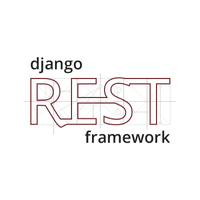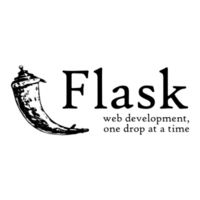What is Django REST framework and what are its top alternatives?
Top Alternatives to Django REST framework
 Django
DjangoDjango is a high-level Python Web framework that encourages rapid development and clean, pragmatic design. ...
 Flask
FlaskFlask is intended for getting started very quickly and was developed with best intentions in mind. ...
 Tastypie
TastypieTastypie is a webservice API framework for Django. It provides a convenient, yet powerful and highly customizable abstraction for creating REST-style interfaces. ...
 Swagger UI
Swagger UISwagger UI is a dependency-free collection of HTML, Javascript, and CSS assets that dynamically generate beautiful documentation and sandbox from a Swagger-compliant API ...
 Graphene
GrapheneGraphene is a Python library for building GraphQL schemas/types fast and easily. ...
 Spring Boot
Spring BootSpring Boot makes it easy to create stand-alone, production-grade Spring based Applications that you can "just run". We take an opinionated view of the Spring platform and third-party libraries so you can get started with minimum fuss. Most Spring Boot applications need very little Spring configuration. ...
 Laravel
LaravelIt is a web application framework with expressive, elegant syntax. It attempts to take the pain out of development by easing common tasks used in the majority of web projects, such as authentication, routing, sessions, and caching. ...
 Firebase
FirebaseFirebase is a cloud service designed to power real-time, collaborative applications. Simply add the Firebase library to your application to gain access to a shared data structure; any changes you make to that data are automatically synchronized with the Firebase cloud and with other clients within milliseconds. ...
Django REST framework alternatives & related posts
- Rapid development670
- Open source487
- Great community424
- Easy to learn379
- Mvc276
- Beautiful code232
- Elegant223
- Free206
- Great packages203
- Great libraries194
- Comes with auth and crud admin panel79
- Restful79
- Powerful78
- Great documentation75
- Great for web71
- Python57
- Great orm43
- Great for api41
- All included32
- Fast29
- Web Apps25
- Easy setup23
- Clean23
- Used by top startups21
- Sexy19
- ORM19
- The Django community15
- Allows for very rapid development with great libraries14
- Convention over configuration14
- King of backend world11
- Full stack10
- Great MVC and templating engine10
- Fast prototyping8
- Mvt8
- Easy to develop end to end AI Models7
- Batteries included7
- Its elegant and practical7
- Have not found anything that it can't do6
- Very quick to get something up and running6
- Cross-Platform6
- Easy Structure , useful inbuilt library5
- Great peformance5
- Zero code burden to change databases5
- Python community5
- Map4
- Just the right level of abstraction4
- Easy to change database manager4
- Modular4
- Many libraries4
- Easy to use4
- Easy4
- Full-Text Search4
- Scaffold3
- Fastapi1
- Built in common security1
- Scalable1
- Great default admin panel1
- Node js1
- Gigante ta1
- Rails0
- Underpowered templating26
- Autoreload restarts whole server22
- Underpowered ORM22
- URL dispatcher ignores HTTP method15
- Internal subcomponents coupling10
- Not nodejs8
- Configuration hell8
- Admin7
- Not as clean and nice documentation like Laravel5
- Python4
- Not typed3
- Bloated admin panel included3
- Overwhelming folder structure2
- InEffective Multithreading2
- Not type safe1
related Django posts
Simple controls over complex technologies, as we put it, wouldn't be possible without neat UIs for our user areas including start page, dashboard, settings, and docs.
Initially, there was Django. Back in 2011, considering our Python-centric approach, that was the best choice. Later, we realized we needed to iterate on our website more quickly. And this led us to detaching Django from our front end. That was when we decided to build an SPA.
For building user interfaces, we're currently using React as it provided the fastest rendering back when we were building our toolkit. It’s worth mentioning Uploadcare is not a front-end-focused SPA: we aren’t running at high levels of complexity. If it were, we’d go with Ember.js.
However, there's a chance we will shift to the faster Preact, with its motto of using as little code as possible, and because it makes more use of browser APIs. One of our future tasks for our front end is to configure our Webpack bundler to split up the code for different site sections. For styles, we use PostCSS along with its plugins such as cssnano which minifies all the code.
All that allows us to provide a great user experience and quickly implement changes where they are needed with as little code as possible.
Hey, so I developed a basic application with Python. But to use it, you need a python interpreter. I want to add a GUI to make it more appealing. What should I choose to develop a GUI? I have very basic skills in front end development (CSS, JavaScript). I am fluent in python. I'm looking for a tool that is easy to use and doesn't require too much code knowledge. I have recently tried out Flask, but it is kinda complicated. Should I stick with it, move to Django, or is there another nice framework to use?
Flask
- Flexibilty14
- For it flexibility10
- Flexibilty and easy to use9
- Flask8
- User friendly7
- Secured6
- Unopinionated5
- Orm3
- Secure2
- Beautiful code1
- Easy to get started1
- Easy to develop and maintain applications1
- Not JS1
- Easy to use1
- Documentation1
- Python1
- Minimal1
- Lightweight1
- Easy to setup and get it going1
- Perfect for small to large projects with superb docs.1
- Easy to integrate1
- Speed1
- Get started quickly1
- Customizable1
- Simple to use1
- Powerful1
- Rapid development1
- Open source0
- Well designed0
- Productive0
- Awesome0
- Expressive0
- Love it0
- Not JS10
- Context7
- Not fast5
- Don't has many module as in spring1
related Flask posts
One of our top priorities at Pinterest is fostering a safe and trustworthy experience for all Pinners. As Pinterest’s user base and ads business grow, the review volume has been increasing exponentially, and more content types require moderation support. To solve greater engineering and operational challenges at scale, we needed a highly-reliable and performant system to detect, report, evaluate, and act on abusive content and users and so we created Pinqueue.
Pinqueue-3.0 serves as a generic platform for content moderation and human labeling. Under the hood, Pinqueue3.0 is a Flask + React app powered by Pinterest’s very own Gestalt UI framework. On the backend, Pinqueue3.0 heavily relies on PinLater, a Pinterest-built reliable asynchronous job execution system, to handle the requests for enqueueing and action-taking. Using PinLater has significantly strengthened Pinqueue3.0’s overall infra with its capability of processing a massive load of events with configurable retry policies.
Hundreds of millions of people around the world use Pinterest to discover and do what they love, and our job is to protect them from abusive and harmful content. We’re committed to providing an inspirational yet safe experience to all Pinners. Solving trust & safety problems is a joint effort requiring expertise across multiple domains. Pinqueue3.0 not only plays a critical role in responsively taking down unsafe content, it also has become an enabler for future ML/automation initiatives by providing high-quality human labels. Going forward, we will continue to improve the review experience, measure review quality and collaborate with our machine learning teams to solve content moderation beyond manual reviews at an even larger scale.
Hey, so I developed a basic application with Python. But to use it, you need a python interpreter. I want to add a GUI to make it more appealing. What should I choose to develop a GUI? I have very basic skills in front end development (CSS, JavaScript). I am fluent in python. I'm looking for a tool that is easy to use and doesn't require too much code knowledge. I have recently tried out Flask, but it is kinda complicated. Should I stick with it, move to Django, or is there another nice framework to use?
- Good in Django2
- Fast development1
- Customizable1
related Tastypie posts
Swagger UI
- Open Source49
- Can execute api calls from the documentation34
- Free to use29
- Customizable19
- Easy to implement in .Net14
- Mature, clean spec13
- API Visualization12
- Coverage9
- Scaffolding6
- Easy to use6
- Vibrant and active community5
- Elegant4
- Adopted by tm forum api3
- Clear for React2
- Api1
- Can deploy API to AWS API Gateway and AWS Lambda1
- Need to learn YAML and RAML3
- Documentation doesn't look that good2
- Doesn't generate code snippets in different languages1
- You don’t actually get in-line error highlighting1
- Does not support hypermedia1
related Swagger UI posts
We just launched the Segment Config API (try it out for yourself here) — a set of public REST APIs that enable you to manage your Segment configuration. A public API is only as good as its #documentation. For the API reference doc we are using Postman.
Postman is an “API development environment”. You download the desktop app, and build API requests by URL and payload. Over time you can build up a set of requests and organize them into a “Postman Collection”. You can generalize a collection with “collection variables”. This allows you to parameterize things like username, password and workspace_name so a user can fill their own values in before making an API call. This makes it possible to use Postman for one-off API tasks instead of writing code.
Then you can add Markdown content to the entire collection, a folder of related methods, and/or every API method to explain how the APIs work. You can publish a collection and easily share it with a URL.
This turns Postman from a personal #API utility to full-blown public interactive API documentation. The result is a great looking web page with all the API calls, docs and sample requests and responses in one place. Check out the results here.
Postman’s powers don’t end here. You can automate Postman with “test scripts” and have it periodically run a collection scripts as “monitors”. We now have #QA around all the APIs in public docs to make sure they are always correct
Along the way we tried other techniques for documenting APIs like ReadMe.io or Swagger UI. These required a lot of effort to customize.
Writing and maintaining a Postman collection takes some work, but the resulting documentation site, interactivity and API testing tools are well worth it.
Our whole Node.js backend stack consists of the following tools:
- Lerna as a tool for multi package and multi repository management
- npm as package manager
- NestJS as Node.js framework
- TypeScript as programming language
- ExpressJS as web server
- Swagger UI for visualizing and interacting with the API’s resources
- Postman as a tool for API development
- TypeORM as object relational mapping layer
- JSON Web Token for access token management
The main reason we have chosen Node.js over PHP is related to the following artifacts:
- Made for the web and widely in use: Node.js is a software platform for developing server-side network services. Well-known projects that rely on Node.js include the blogging software Ghost, the project management tool Trello and the operating system WebOS. Node.js requires the JavaScript runtime environment V8, which was specially developed by Google for the popular Chrome browser. This guarantees a very resource-saving architecture, which qualifies Node.js especially for the operation of a web server. Ryan Dahl, the developer of Node.js, released the first stable version on May 27, 2009. He developed Node.js out of dissatisfaction with the possibilities that JavaScript offered at the time. The basic functionality of Node.js has been mapped with JavaScript since the first version, which can be expanded with a large number of different modules. The current package managers (npm or Yarn) for Node.js know more than 1,000,000 of these modules.
- Fast server-side solutions: Node.js adopts the JavaScript "event-loop" to create non-blocking I/O applications that conveniently serve simultaneous events. With the standard available asynchronous processing within JavaScript/TypeScript, highly scalable, server-side solutions can be realized. The efficient use of the CPU and the RAM is maximized and more simultaneous requests can be processed than with conventional multi-thread servers.
- A language along the entire stack: Widely used frameworks such as React or AngularJS or Vue.js, which we prefer, are written in JavaScript/TypeScript. If Node.js is now used on the server side, you can use all the advantages of a uniform script language throughout the entire application development. The same language in the back- and frontend simplifies the maintenance of the application and also the coordination within the development team.
- Flexibility: Node.js sets very few strict dependencies, rules and guidelines and thus grants a high degree of flexibility in application development. There are no strict conventions so that the appropriate architecture, design structures, modules and features can be freely selected for the development.
- Will replace RESTful interfaces0
- The future of API's0
related Graphene posts
We recently switched from MongoDB and the Python library MongoEngine to PostgreSQL and Django in order to:
- Better leverage GraphQL (using the Graphene library)
- Allow us to use the autogenerated Django admin interface
- Allow better performance due to the way some of our pages present data
- Give us more a mature stack in the form of Django replacing MongoEngine, which we had some issues with in the past.
MongoDB was hosted on mlab, and we now host Postgres on Amazon RDS .
We recently implemented GraphQL because we needed to build dynamic reports based on the user preference and configuration, this was extremely complicated with our actual RESTful API, the code started to get harder to maintain but switching to GraphQL helped us to to build beautiful reports for our clients that truly help them make data-driven decisions.
Our goal is to implemented GraphQL in the whole platform eventually, we are using Graphene , a python library for Django .
Spring Boot
- Powerful and handy149
- Easy setup134
- Java128
- Spring90
- Fast85
- Extensible46
- Lots of "off the shelf" functionalities37
- Cloud Solid32
- Caches well26
- Productive24
- Many receipes around for obscure features24
- Modular23
- Integrations with most other Java frameworks23
- Spring ecosystem is great22
- Auto-configuration21
- Fast Performance With Microservices21
- Community18
- Easy setup, Community Support, Solid for ERP apps17
- One-stop shop15
- Easy to parallelize14
- Cross-platform14
- Easy setup, good for build erp systems, well documented13
- Powerful 3rd party libraries and frameworks13
- Easy setup, Git Integration12
- It's so easier to start a project on spring5
- Kotlin4
- Microservice and Reactive Programming1
- The ability to integrate with the open source ecosystem1
- Heavy weight23
- Annotation ceremony18
- Java13
- Many config files needed11
- Reactive5
- Excellent tools for cloud hosting, since 5.x4
- Java 😒😒1
related Spring Boot posts
We are in the process of building a modern content platform to deliver our content through various channels. We decided to go with Microservices architecture as we wanted scale. Microservice architecture style is an approach to developing an application as a suite of small independently deployable services built around specific business capabilities. You can gain modularity, extensive parallelism and cost-effective scaling by deploying services across many distributed servers. Microservices modularity facilitates independent updates/deployments, and helps to avoid single point of failure, which can help prevent large-scale outages. We also decided to use Event Driven Architecture pattern which is a popular distributed asynchronous architecture pattern used to produce highly scalable applications. The event-driven architecture is made up of highly decoupled, single-purpose event processing components that asynchronously receive and process events.
To build our #Backend capabilities we decided to use the following: 1. #Microservices - Java with Spring Boot , Node.js with ExpressJS and Python with Flask 2. #Eventsourcingframework - Amazon Kinesis , Amazon Kinesis Firehose , Amazon SNS , Amazon SQS, AWS Lambda 3. #Data - Amazon RDS , Amazon DynamoDB , Amazon S3 , MongoDB Atlas
To build #Webapps we decided to use Angular 2 with RxJS
#Devops - GitHub , Travis CI , Terraform , Docker , Serverless
Is learning Spring and Spring Boot for web apps back-end development is still relevant in 2021? Feel free to share your views with comparison to Django/Node.js/ ExpressJS or other frameworks.
Please share some good beginner resources to start learning about spring/spring boot framework to build the web apps.
- Clean architecture553
- Growing community392
- Composer friendly370
- Open source344
- The only framework to consider for php324
- Mvc220
- Quickly develop210
- Dependency injection168
- Application architecture156
- Embraces good community packages143
- Write less, do more73
- Orm (eloquent)71
- Restful routing66
- Database migrations & seeds57
- Artisan scaffolding and migrations55
- Great documentation41
- Awesome40
- Awsome, Powerfull, Fast and Rapid30
- Build Apps faster, easier and better29
- Eloquent ORM28
- Promotes elegant coding26
- Modern PHP26
- JSON friendly26
- Most easy for me25
- Easy to learn, scalability24
- Beautiful23
- Blade Template22
- Test-Driven21
- Security15
- Based on SOLID15
- Clean Documentation13
- Easy to attach Middleware13
- Cool13
- Simple12
- Convention over Configuration12
- Easy Request Validatin11
- Simpler10
- Fast10
- Easy to use10
- Get going quickly straight out of the box. BYOKDM9
- Its just wow9
- Laravel + Cassandra = Killer Framework8
- Simplistic , easy and faster8
- Friendly API8
- Less dependencies7
- Super easy and powerful7
- Great customer support6
- Its beautiful to code in6
- Speed5
- Eloquent5
- Composer5
- Minimum system requirements5
- Laravel Mix5
- Easy5
- The only "cons" is wrong! No static method just Facades5
- Fast and Clarify framework5
- Active Record5
- Php75
- Ease of use4
- Laragon4
- Laravel casher4
- Easy views handling and great ORM4
- Laravel Forge and Envoy4
- Cashier with Braintree and Stripe4
- Laravel Passport3
- Laravel Spark3
- Intuitive usage3
- Laravel Horizon and Telescope3
- Laravel Nova3
- Rapid development3
- Laravel Vite2
- Scout2
- Deployment2
- Succint sintax1
- PHP53
- Too many dependency33
- Slower than the other two23
- A lot of static method calls for convenience17
- Too many include15
- Heavy13
- Bloated9
- Laravel8
- Confusing7
- Too underrated5
- Not fast with MongoDB4
- Not using SOLID principles1
- Slow and too much big1
- Difficult to learn1
related Laravel posts
I need to build a web application plus android and IOS apps for an enterprise, like an e-commerce portal. It will have intensive use of MySQL to display thousands (40-50k) of live product information in an interactive table (searchable, filterable), live delivery tracking. It has to be secure, as it will handle information on customers, sales, inventory. Here is the technology stack: Backend: Laravel 7 Frondend: Vue.js, React or AngularJS?
Need help deciding technology stack. Thanks.
Coming from a non-web development environment background, I was a bit lost a first and bewildered by all the varying tools and platforms, and spent much too long evaluating before eventualy deciding on Laravel as the main core of my development.
But as I started development with Laravel that lead me into discovering Vue.js for creating beautiful front-end components that were easy to configure and extend, so I decided to standardise on Vue.js for most of my front-end development.
During my search for additional Vue.js components, a chance comment in a @laravel forum , led me to discover Quasar Framework initially for it's wide range of in-built components ... but once, I realised that Quasar Framework allowed me to use the same codebase to create apps for SPA, PWA, iOS, Android, and Electron then I was hooked.
So, I'm now using mainly just Quasar Framework for all the front-end, with Laravel providing a backend API service to the Front-end apps.
I'm deploying this all to DigitalOcean droplets via service called Moss.sh which deploys my private GitHub repositories directly to DigitalOcean in realtime.
- Realtime backend made easy371
- Fast and responsive270
- Easy setup242
- Real-time215
- JSON191
- Free134
- Backed by google128
- Angular adaptor83
- Reliable68
- Great customer support36
- Great documentation32
- Real-time synchronization25
- Mobile friendly21
- Rapid prototyping18
- Great security14
- Automatic scaling12
- Freakingly awesome11
- Chat8
- Angularfire is an amazing addition!8
- Super fast development8
- Built in user auth/oauth6
- Firebase hosting6
- Ios adaptor6
- Awesome next-gen backend6
- Speed of light4
- Very easy to use4
- Great3
- It's made development super fast3
- Brilliant for startups3
- Free hosting2
- Cloud functions2
- JS Offline and Sync suport2
- Low battery consumption2
- .net2
- The concurrent updates create a great experience2
- Push notification2
- I can quickly create static web apps with no backend2
- Great all-round functionality2
- Free authentication solution2
- Easy Reactjs integration1
- Google's support1
- Free SSL1
- CDN & cache out of the box1
- Easy to use1
- Large1
- Faster workflow1
- Serverless1
- Good Free Limits1
- Simple and easy1
- Can become expensive31
- No open source, you depend on external company16
- Scalability is not infinite15
- Not Flexible Enough9
- Cant filter queries7
- Very unstable server3
- No Relational Data3
- Too many errors2
- No offline sync2
related Firebase posts
I was building a personal project that I needed to store items in a real time database. I am more comfortable with my Frontend skills than my backend so I didn't want to spend time building out anything in Ruby or Go.
I stumbled on Firebase by #Google, and it was really all I needed. It had realtime data, an area for storing file uploads and best of all for the amount of data I needed it was free!
I built out my application using tools I was familiar with, React for the framework, Redux.js to manage my state across components, and styled-components for the styling.
Now as this was a project I was just working on in my free time for fun I didn't really want to pay for hosting. I did some research and I found Netlify. I had actually seen them at #ReactRally the year before and deployed a Gatsby site to Netlify already.
Netlify was very easy to setup and link to my GitHub account you select a repo and pretty much with very little configuration you have a live site that will deploy every time you push to master.
With the selection of these tools I was able to build out my application, connect it to a realtime database, and deploy to a live environment all with $0 spent.
If you're looking to build out a small app I suggest giving these tools a go as you can get your idea out into the real world for absolutely no cost.
Your tech stack is solid for building a real-time messaging project.
React and React Native are excellent choices for the frontend, especially if you want to have both web and mobile versions of your application share code.
ExpressJS is an unopinionated framework that affords you the flexibility to use it's features at your term, which is a good start. However, I would recommend you explore Sails.js as well. Sails.js is built on top of Express.js and it provides additional features out of the box, especially the Websocket integration that your project requires.
Don't forget to set up Graphql codegen, this would improve your dev experience (Add Typescript, if you can too).
I don't know much about databases but you might want to consider using NO-SQL. I used Firebase real-time db and aws dynamo db on a few of my personal projects and I love they're easy to work with and offer more flexibility for a chat application.




































